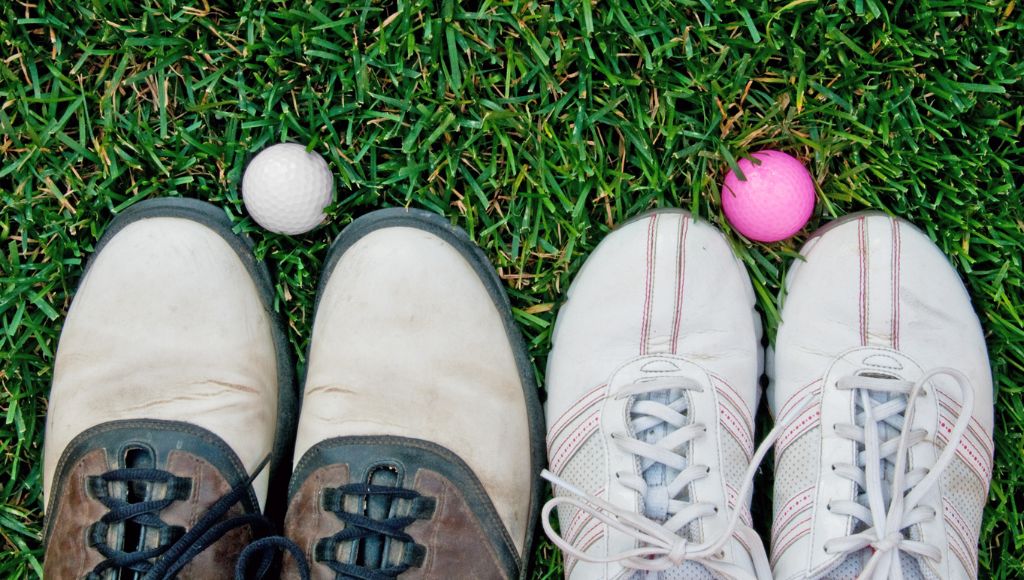Golf is a sport that involves walking the course with repetitive motions, such as swinging, twisting, and turning. The rotation required, and the range of motion in the golf swing can exacerbate the symptoms associated with all types of arthritis.
Over time, golfers with arthritis may suffer from worsening pain and stiffness in the joints. If you suffer from an arthritic condition such as spinal arthritis you might be forgiven for thinking your days of golfing are over.
However, don’t worry, you are not alone in dealing with this condition. In a report published by the American Academy of Orthopedic Surgeons, it was estimated that over 50 million Americans suffer from some type of arthritis such as osteoarthritis or spinal stenosis.
We know that many of these will be passionate golfers like you, and will want to continue playing golf. In this article, we will help this wish become a reality.
We’ve researched the best advice from many different sources and experts to provide you with general guidelines and the best 5 tips for playing golf with spinal arthritis for golfers with spinal stenosis.
This advice ranges from exercises to making adjustments to the mechanics of your swing. Follow our advice and you could continue playing your favorite sport for many years, also with some of the tips you might even find your golf scores improving along with extra ball speed and distance.
You may also enjoy:
Tips for playing golf with spinal arthritis
Warm up & exercise
For golfers with spinal arthritis, a warm-up can help to reduce the risk of pain, stiffness in the back and reduce injury. This makes it easier to cope with the demands and strain of the golf swing. It can also help to reduce the risk of further deterioration of the spine by preparing the joints for the repetitive and twisting movement of the golf swing helping golfers play pain free.
Golfers with spinal arthritis should take time to stretch their shoulder muscles before playing to improve flexibility and range of motion in the back. Not only focusing on the upper body but also the hips, knees, and hamstrings can also help to prevent injuries and relieve pressure on the joints and muscles.
Golf is a very physical activity, swinging and hitting the golf ball up to 100 times a round. So as well as stretching, we would recommend performing exercises to promote and strengthen the core muscles that support the spine during the swing. Spending 5-10 minutes stretching before your tee time aids your hip flexibility, core muscles and reduces your back pain.
This can involve strengthening the shoulder muscles and abdominal muscles. This article from the Arthritis Foundation gives some excellent general guidelines for golf-related and warm up exercises to help prepare the muscles for the game.

Get professional golf swing advice
The best advice for every committed golfer should always be to get professional swing advice. This is even more important than the number of swings and number of holes you’ve played. If you suffer from an arthritic condition such as spinal stenosis, getting professional advice is worth the shot.
If you want to continue playing on the golf course, a professional golf coach can advise you on adjustment to your backswing, downswing, rotation of your lead leg and follow through. Your backswing should end at a three o’clock position, rather than the one o’clock position.
These professionals can give you some general guidelines to ensure that your golf swing is as efficient as possible with no unnecessary movements to prevent back pain.
One possible adjustment suggested for your golf swing could be to shorten your follow-through to prevent overstretching of the spine during the swing. This is a relatively minor change but you will need to spend some time perfecting this swing adjustment and ball position before walking up to the first tee.
We would suggest taking some practice swings so that over time you will slowly progress to the perfect finish advised by the golf pro. These changes can help to prolong your playing career and prevent back pain, sore muscles, further injury or additional discomfort on the spine, shoulders, hamstrings, foot and hip along with other body parts involved in the weight shifts of the golf swing.
Reduce walking – use a golf cart
Throughout 18 holes of golf, you may end up walking over 4km. This is a significant distance even for a relatively healthy golfer of any age, but for someone suffering from spinal stenosis, this can cause a significant amount of stress on the feet, hips, leg and spine.
We would suggest, to prevent further injury to your body, that you use a ride-on cart while golfing. This can help take the weight off your feet, and prevent injury by reducing the pressure on your leg joints when golfing.
You might find that you want to have a balance of walking and riding in the cart, which is perfectly fine. Whatever you choose to do, reducing the amount of time you spend walking can not only ensure that you prevent injury and the symptoms of spinal stenosis, but you will also feel fresher and more energetic by the time you get to the 18th tee position.

Use longer clubs
Using longer irons with golf gloves have many added benefits for all golfers, not just for golfers who are suffering from spinal stenosis. Longer clubs reduce the likelihood of pain, injury, and stress in the muscles during the golf swing. Also, using golf gloves gives your joints additional padding and warmth to alleviate some of this pain.
Longer clubs also promote greater leverage in your golf swing mechanics, which in turn can help golfers increase ball and club head speed, which in turn can lead to extra distance.
As one of the most used pieces of equipment in your golf bag after your ball, changing your irons is a big step to take. We would recommend seeking the advice of a trained golf professional to advise on the best fit for your body type and skill level.
Choosing the best fitting longer irons can significantly help the symptoms of spinal stenosis by forcing golfers to stand more upright with their club when setting up over the ball.
Change your golf shoes
As we mentioned in a previous tip, during a round of golf, you will walk a considerable distance. If you are a golfer of any age suffering from a condition such as spinal stenosis, this motion can cause significant stress to your leg or other major parts of the body.
When walking, the right foot as a lead leg can take a lot of pressure which can cause a lot of pain to be passed up the lead leg through to the knees, hip, and spine. This can seriously impact your enjoyment of the game and might force you to quit the game altogether.
Choosing golf shoes which provide more cushioning and support to your leg can help alleviate any pain or discomfort suffered when you play on the golf course. Specialist golf shoes designed for golfers with arthritis can also help with leg balance during the swing movement.
This equipment change can help to improve your golf game and enjoyment. Better leg balance in the golf swing will promote an improved foot connection with the ground, leading to more stability during the backswing, which translates into better rotation, and a more powerful downswing.

FAQs
Will playing golf make spinal stenosis worse?
Golf can make the symptoms of spinal stenosis worse if you are not careful with your movements. Golfers with spinal stenosis need to consult with their doctor or physical therapist before starting any physical activity to ensure that it is safe for them to do so.
However, if you follow advice such as shortening your swing rotation, changing your equipment, and thoroughly warming up before playing it can still be possible to enjoy playing golf.
Can you play golf with a degenerative disc?
The symptoms for people suffering from a degenerative disc condition could be low back pain or neck pain, limited range of motion along with weakness in the legs or arms. These could all be aggravated by playing golf.
If you have this condition and want to continue to enjoy golf we would recommend seeking advice from a medical professional. Along with this a golf pro can also recommend changes to your swing and modify your movement. They may also suggest you use a cart instead of carrying the bag to reduce the load on your spine.
Does golf aggravate arthritis?
Although there are potential risks of exacerbating your condition should you play golf with arthritis, there are also some positive effects of playing golf. Golf requires you to walk and carry your own clubs, which can provide a moderate level of aerobic exercise, which can help maintain a healthy weight.
Playing golf regularly can also improve strength and flexibility. Also as golf requires precise movements and rotation, which can help to improve your balance and coordination.
Please remember, these are just general tips, if you are in pain, always refer to a professional sports medicine physician, or doctor trained in physical medicine to ensure you get the best advice or rehabilitation. This way all of the remedies and health benefits of playing golf can be discussed with a trained expert.
Can you play golf with spinal arthritis? – final thoughts
You will have seen from this article that just because you have a diagnosis of spinal arthritis you don’t have to hang up your golf clubs. Playing golf can be an excellent form of exercise for people with spinal arthritis, and the social element of the game is also great for improving your mental health.
As golf requires a wide range of motion and uses different muscle groups, this can help to maintain or improve strength, stability and flexibility on the golf course. For golfers with spinal stenosis, we would recommend that you always listen to your body and stop playing, or cut your round short if they feel pain or discomfort.
Use our 5 tips for playing golf with spinal arthritis to ensure that you don’t put excessive stress on your joints and ensure you can keep playing for many years to come. If you follow our advice it will still be possible to continue playing, and you could even improve your golf game.

